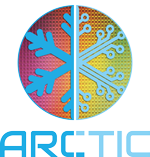Besi EU projects

|
ArCTIC’s main ambition is to pursue large scale deployment of cryogenics in information and communication technology (ICT) applications, with special focus on controlling and interfacing quantum computers. This project aims to close an important gap: while qubit systems themselves are well established, the control infrastructures are in their infancy. The cryogenic technologies of ArCTIC will lead to important cross-fertilization between classical and quantum applications that will strengthen the forming European ecosystem. |
|
|
AGRARSENSE is a large 3-year Chips Joint Undertaking consortium project aiming to develop microelectronics, photonics, electronic packaging for agricultural use and forestry. The project will also develop related ICT and data management to realise large scale field demonstrators for real industrial needs. |
|
|
The KDT JU co-funded project R-PODID aims to develop an automated, cloudless, short-term fault-prediction for electric drives, power modules, and power devices that can be integrated into power converters. |
|
|
The HiCONNECTS project develops the next generation of electronic components and systems heterogeneous integration core technology solutions for energy-efficient, high-performance wireless/wired cloud and edge computing and automotive radar in support of the next radio frequency and IT technology evolution. |
|
|
|
The project MATQu aims to enable stable European industry-scale fabrication value chains for solid-state-based quantum computer development. MATQu started in June 2021 with the goal to support the creation of a pan-European research infrastructure for advanced computing technologies. The project brings together world-class European research and technology organizations, industrial fabrication facilities and leading application partners in the domain of solid-state qubits - a subject of intense global competition - to realize the vision of a European supply chain for materials and processes. Superconducting Josephson Junctions (SJJs) qubits are among the most promising components to realize a large-scale quantum computer. The performance of SJJs depends critically on the quality of the fabrication substrates, the materials used to make the circuit components, as well as the reproducibility of the processes applied in fabrication. A stable and controlled value chain is key to improving these parameters in the future. The three-year project will create a European eco-system to expand the applicability of solid-state qubits by improving materials, as well as processing and characterization technologies for quantum computing hardware. |
|
|
TINKER will provide a new cost- and resource efficient pathway for RADAR and LIDAR sensor package fabrication to the European automotive and microelectronic industry via additive manufacturing and inline feedback control mechanisms. Manufacturing with high throughput up to 250units/min, improved automation by 20%, improved accuracy by 50%, and improved reliability by a factor of 100 is targeted. The TINKER consortium consists of ten of the finest industrial companies, three research specialists, one consultancy and a service association, who are major players in the field of microelectronic manufacturing and processing and industrial fields applying or interested in applying additive manufacturing for their needs and defending the European pole position in miniaturization. |
|
|
The objective of the Moore4Medical project is to accelerate innovation in electronic medical devices. The project addresses emerging medical applications and technologies that offer significant new opportunities for the Electronic Systems & Components (ECS) industry including: bioelectronic medicines, organ-on-chip, drug adherence monitoring, smart ultrasound, radiation free interventions and continuous monitoring. The new technologies will help fighting the increasing cost of healthcare by: reducing the need for hospitalisation, helping to develop personalized therapies, and realising intelligent point-of-care diagnostic tools. Moore4Medical will bring together 66 selected companies, universities and institutes from 12 countries who will develop open technology platforms for these emerging fields to help them bridge “the Valley of Death” in shorter time and at lower cost. Open technology platforms used by multiple users for multiple applications with the prospect of medium to high volume markets are an attractive proposition for the European ECS industry. The combination of typical MedTech and Pharma applications with an ECS style platform approach will enhance the competitiveness for the emerging medical domains addressed in Moore4Medical. With value and IP moving from the technology level towards applications and solutions, defragmentation and open technology platforms will be key in acquiring and maintaining a premier position for Europe in the forefront of affordable healthcare. |
|
|
The Next Generation GaN Power Module project (GaNext) aims at removing the barriers to adopting Gallium Nitride (GaN) semiconductors and fully demonstrating the higher efficiency and compactness of GaN-based power systems. The main project deliverable will be an intelligent GaN power module where the gate drive, control and protection circuits are integrated or co-packaged with the power device. |
|
|
The CHARM ECSEL JU project aims to develop industrial IoT solutions with an improved tolerance towards harsh industrial surroundings. Digitalisation of the European manufacturing industries is the key to their continuous renewal and competitiveness. Harsh environmental conditions in manufacturing processes and end user environment may slow down the opportunities brought by IoT (Internet of Things) and AI (Artificial Intelligence). The CHARM project is set to solve this challenge. Download the full Press Release. |
|
|
The drive for new technology in advanced packaging for photonics, optics and electronics is creating an opportunity to build the competitive edge of component and systems development in Europe, while re-establishing the European manufacturing and packaging value chain. The ECSEL JU project APPLAUSE (No. 826588) supports this by building on the European expertise in advanced packaging and assembly to develop new tools, methods and processes for high volume mass manufacturing of electrical and optical components. The technologies will be piloted in 6 industrial use cases, related to ambient light sensor for mobile and wearable applications, thermal IR image sensor for automotive and surveillance applications, high speed datacom transceivers, flexible patch for cardiac monitoring, miniaturized invasive cardiac sensors, and optical humidity measurement modules. |
|
|
R3-POWERUP is committed to challenge several objectives. The development and demonstration of a brand new 300mm advanced manufacturing facility addressing a multi-KET Pilot Line (i.e. Nanoelectronics, Nanotech, Adv. Manufacturing). The Pilot Line will build on Digital Factory and Industry 4.0 principles, enforcing a flexible, adaptive and reliable facility that will push forward the state of the art of nanoelectronics manufacturing in Europe. It will push a major improvement in productivity and competitiveness for integrated IC solutions for smart power and power discretes technologies. The application of such technologies will be a breakthrough enabler for Energy Efficiency and CO2Reduction worldwide, in line with COP21’s resolution. The project will address new Silicon process development innovative Equipment development new Packaging, including power and System-in-Package considerations and industry 4.0 and big-data analytics for Smart Manufacturing concepts. |
|
|
The DISC project aims to develop key technologies for the next generation of high-performance photovoltaic (PV) solar cells and modules, allowing ultra-low solar electricity costs with minimum environmental impact. Technologically, the approach of the DISC project combines today’s simple, non-patterned device architecture for double-side contacted Si solar cells with innovative carrier selective contacts. DISC will target efficiencies >25.5% on large area cell and >22% at module level while demonstrating pilot manufacturing readiness at competitive costs. By these means, DISC will provide the key elements to achieve a very low Levelized Costs of Electricity in Europe between 3.7-6.4 €ct/kWh (depending on the irradiation), with mid-term potential for further reductions. This can make solar one of the cheapest electricity sources available. |
|
|
The European Packaging, Assembly and Test Pilot for Manufacturing of Advanced System-In-Package (EuroPAT-MASIP) project will reinforce the European semiconductor manufacturing position through focusing in the Integrated Circuit and MEMS packaging ecosystem. The goal of the project is to accelerate the manufacturing uptake of advanced packaging technologies and shorten time-to-market by demonstrating the new capabilities in need-based Application Pilots |
|
|
Lab4MEMS II focuses on Micro-Opto-Electro-Mechanical Systems (MOEMS) that merge MEMS with Micro-optics to sense or manipulate optical signals using integrated mechanical, optical, and electrical systems, while the original project maintains its emphasis on developing a pilot line for next-generation MEMS devices augmented with such advanced technologies as piezoelectric or magnetic materials and 3D packaging. |
|
|
PowerBase, an ECSEL project with 39 partners from 9 European countries, enables growth potential and strategic independence for Europe´s semiconductor industry in the face of increased globalization. |
|
|
ATHENIS_3D is an FP7/European funded project, where eleven partners from five different countries develop a new technology platform for automotive electronics. With this innovative IC platform electronic engineers will be able to integrate more functionality on a single chip for lower costs. This is possible through a new technology which enables further integration of advanced More than Moore devices and More Moore devices (90nm and 14nm CMOS) with Through Silicon Vias (TSV) and Wafer Level Packaging (WLP) for harshest automotive conditions including temperatures up to 200C and voltages up to 200V. Cost savings from integration and a 5x reduction of PCB area will be shown. |
|
|
R2POWER300 is committed to challenge the development and manufacturing of a multi-KET Pilot Line (i.e. Nanoelectronics, Nanotechnology, Advanced Manufacturing and Energy Efficiency and CO2 Reduction megatrends. |
|
|
In the InForMed project an integrated pilot line for medical devices is established, covering the complete innovation chain from technology concept to system qualification. It includes micro-fabrication, assembly and even the fabrication of smart catheters. Uniquely, the integrated pilot line is hosted by a large industrial end-user, and is specifically targeted and equipped to bridge the gap in the landscape of micro-fabrication of medical devices between concept creation and full-scale production. |
|
|
EAST (smart Everything everywhere Access to content through Small cells Technologies) develops enablers for 5G Small cells mobile networks up to 6 GHz. Key targets are enhanced data rates (video bandwidths > 100MHz), higher integration (10x to 100x size reduction), higher functionality (MIMO) and reconfigurability (multiple-transmit bands). Major steps have to be taken at the system/design level (novel transmitter architectures) and at the technology level (new silicon processes and packaging solutions). The outcome of this project will position Europe as a technology leader in the upcoming 5G market. |
|
|
Energy efficiency and sustainability are major concerns in society today. The lighting industry is going through a radical transformation driven by rapid progress in LED lighting, semiconductor technology, and the need for sustainable and energy-efficient solutions. The EnLight project delivers new technology and applications that inspire and enable designers in ways far beyond conventional lighting. |
Contact
Sebastiaan Kersjes
Besi Netherlands B.V.
Tel: +31 26 31 96 100
Birgit Brandstätter
Besi Austria GmbH
Tel: +43 5337 600-621
Arjan Hovestad
Meco Equipment Engineers B.V.
Tel: +31 416 384 384














